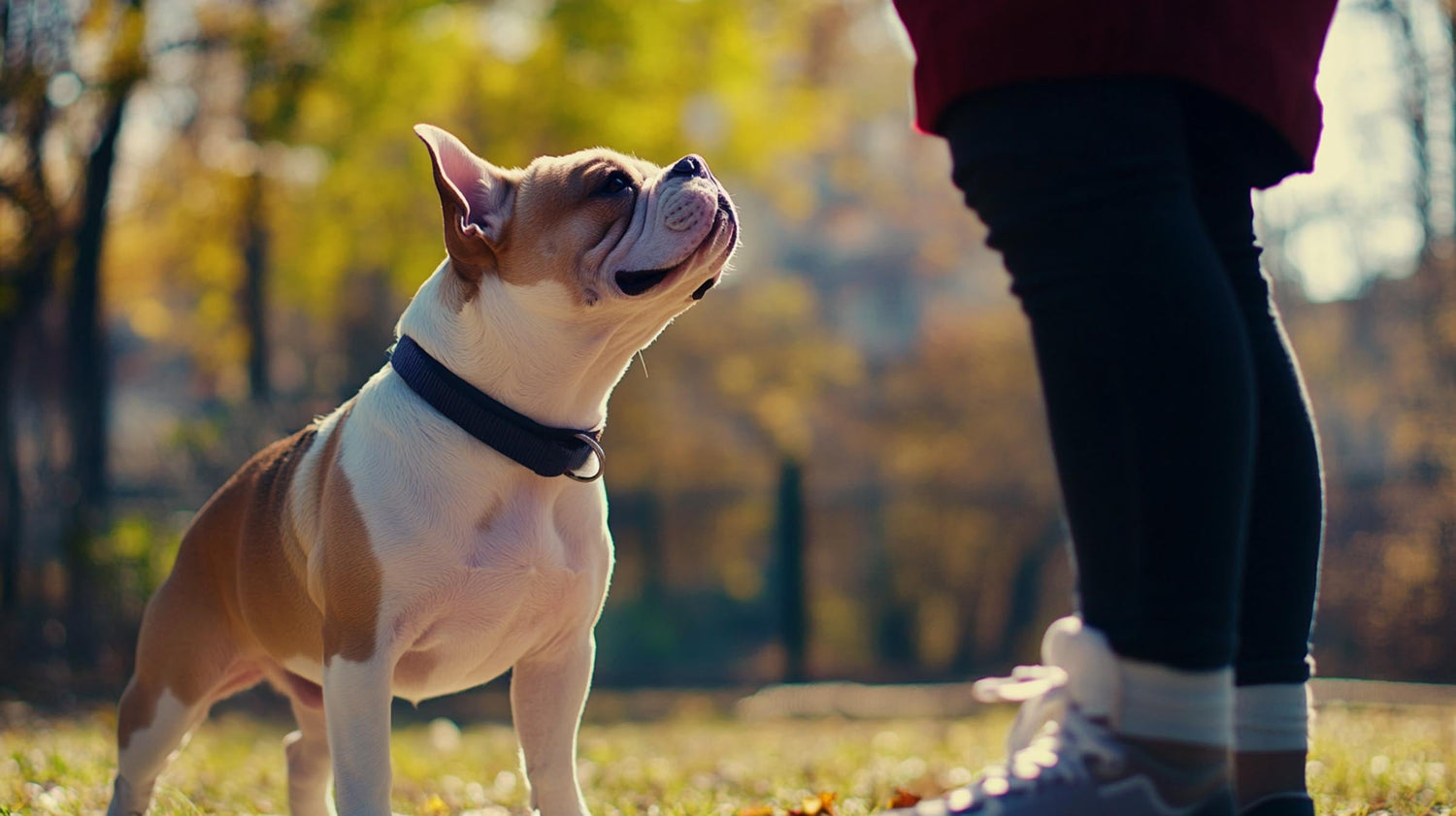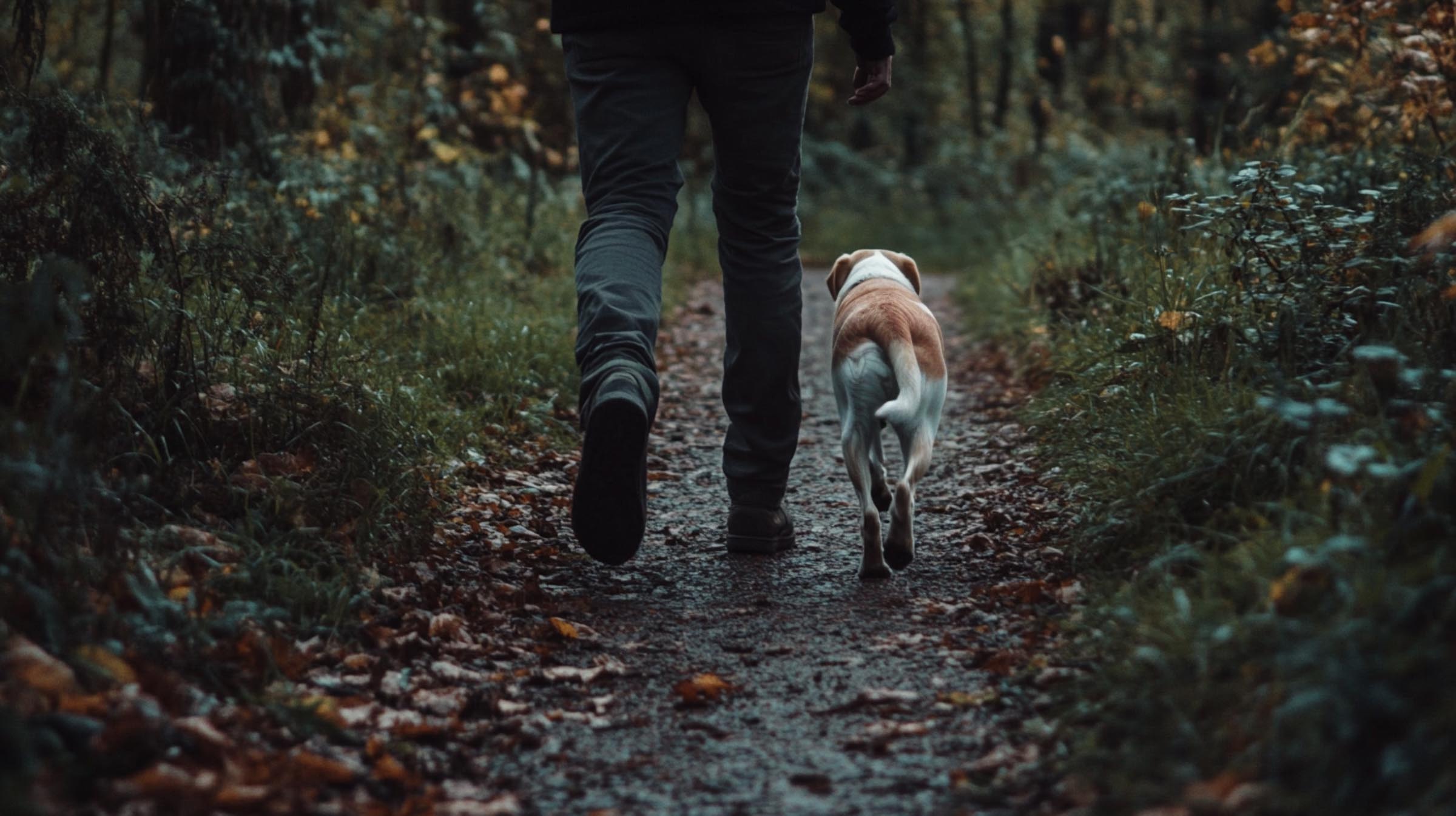Dogs are naturally curious and easily distracted by their surroundings during walks. To prevent leash pulling, it’s essential to make yourself more engaging than whatever catches their attention—whether it’s another dog, a squirrel, or an interesting smell. By becoming the most exciting part of the walk, you can keep your dog focused on you and encourage them to walk politely by your side.
Step 1: Use High-Value Rewards
While regular treats work well in quiet environments, when you're competing with distractions like other dogs or exciting smells, you need to step up the reward game. Use high-value treats that your dog only gets on walks—think small pieces of cheese, boiled chicken, or a special dog treat they absolutely love.
- Bring a Variety: Don’t just stick to one type of treat. Switch it up to keep your dog guessing and excited about what’s coming next.
- Reward Often: At the start of training, reward frequently to keep your dog engaged. As they improve, you can slowly reduce the number of treats while still maintaining their interest.
Why it works: High-value treats act as powerful motivators, helping you compete with the distractions in your dog’s environment.
Step 2: Change Your Pace and Direction
If you’re walking at a steady pace all the time, your dog may get bored or start focusing on other things. Mix it up to keep them focused on you.
- Speed Up and Slow Down: Walk quickly for a few steps, then slow down unexpectedly. This keeps your dog on their toes, wondering what you’ll do next.
- Turn Randomly: Every once in a while, make a quick turn or change direction. Your dog will have to pay attention to where you’re going rather than focusing on pulling toward distractions.
Why it works: Sudden changes in pace and direction force your dog to focus on your movements, preventing them from tuning out and pulling ahead.
Step 3: Use Toys as Engagement Tools
If your dog loves toys, incorporate them into your walks to maintain their interest. Bring along a favourite toy, like a squeaky toy or a tug rope, and use it as a reward or a way to break up the walk.
- Play Mini Games: Stop every once in a while for a short game of tug or fetch. This adds fun to the walk and keeps your dog engaged with you.
- Toys as Rewards: Offer a quick play session with the toy whenever your dog walks politely on the leash or redirects their attention to you when asked.
Why it works: Dogs that are toy-motivated will quickly learn that sticking close to you brings rewards in the form of their favourite toys.
Step 4: Add Verbal Cues and Praise
While treats and toys are effective, your voice can also be a powerful engagement tool. Keep a positive, cheerful tone throughout the walk and talk to your dog frequently. Use verbal cues like “good job” or “let’s go” to maintain their focus and encourage good behaviour.
- Praise Often: When your dog walks without pulling or checks in with you, offer lots of verbal praise in an upbeat tone. Dogs respond well to enthusiastic feedback.
- Keep Talking: Keep the conversation going—talk to your dog to maintain their attention and make the walk more interactive. Even if it’s just simple phrases, this keeps your dog focused on you.
Why it works: Dogs love hearing their owner’s voice, especially when it’s positive and engaging. Using verbal cues reinforces good behaviour and keeps your dog’s attention on you.
Step 5: Incorporate Training Games

Walks don’t have to be just about getting from point A to point B. Incorporating training games into your walks can make them more engaging for your dog and reinforce leash manners.
- Practice Commands: Ask your dog to “sit,” “stay,” or “heel” at random points during the walk. Reward them with treats or praise when they comply.
- Targeting Games: Play “find it” by tossing treats on the ground for your dog to sniff out, or use the “watch me” command to get their attention and reward them with treats.
- Engagement Drills: Walk a few steps, ask for a “sit” or “heel,” and reward with treats. These mini-drills keep your dog focused on you rather than their surroundings.
Why it works: Training games keep the walk interactive, mentally stimulating your dog and encouraging them to pay attention to you.
Step 6: Offer Sniff Breaks as a Reward
Dogs love to sniff and explore their environment. Instead of pulling to get to an interesting scent, teach your dog that walking politely will earn them a chance to sniff and explore.
- Controlled Exploration: When your dog walks without pulling, reward them by allowing a short break to sniff around. Use a cue like “go sniff” to let them know it’s time to explore.
- Keep Sniffing Short: Allow your dog to sniff for a few seconds, then use a cue like “let’s go” to signal that it’s time to continue walking.
Why it works: Dogs are highly motivated by scent, so allowing controlled sniff breaks reinforces the idea that calm, loose-leash walking leads to enjoyable rewards.
Step 7: Play the “Follow Me” Game
Turn your walk into a game by making your dog follow you, making it fun and interactive. You can teach your dog to stay engaged with you by playing this simple game.
- Walk Away Unexpectedly: As your dog is sniffing or looking in another direction, quietly walk away. When they notice and come back to your side, reward them.
- Praise for Following: Use praise and treats whenever your dog catches up to you. This game keeps your dog alert to your movements and more engaged with you.
Why it works: This game adds an element of surprise and keeps your dog focused on staying near you, reducing the likelihood of pulling ahead.
Step 8: Be Animated and Fun
Dogs are highly responsive to body language, so be animated and playful during walks. If you appear relaxed, engaged, and enthusiastic, your dog will feed off that energy and stay focused on you.
- Use Exciting Movements: Clap your hands, bend down, or move in an exaggerated way to capture your dog’s attention when they start to lose focus.
- Stay Upbeat: Keep your tone light and fun throughout the walk. If you’re enjoying yourself, your dog will, too.
Why it works: Being animated makes you the most exciting thing on the walk, and your dog will want to stay close to you to see what fun thing you’ll do next.
Conclusion
To prevent leash pulling and keep your dog engaged during walks, make yourself the most interesting part of the walk. Through a combination of high-value rewards, unpredictable pace changes, interactive training games, and positive energy, you can capture your dog’s focus and guide them to better leash behaviour. By incorporating these techniques into your walks, your dog will learn that paying attention to you is more rewarding than pulling toward distractions, resulting in calmer, more enjoyable walks for both of you.



Leave a comment
This site is protected by hCaptcha and the hCaptcha Privacy Policy and Terms of Service apply.